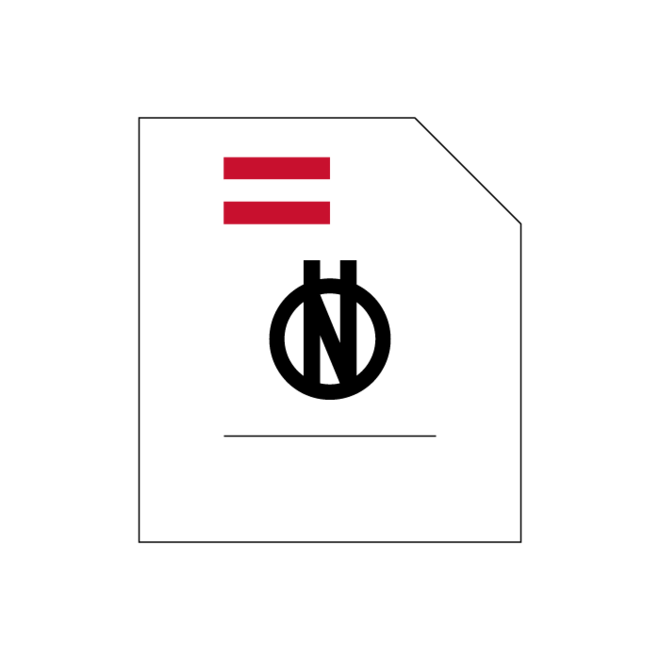Please select and order
€143.05
excl. VAT
Add to cart
Norm
ÖNORM EN ISO 17294-2
Issue date: 2024 03 01
Water quality - Application of inductively coupled plasma mass spectrometry (ICP-MS) - Part 2: Determination of selected elements including uranium isotopes (ISO 17294-2:2023)
This document specifies a method for the determination of the elements aluminium, antimony, arsenic, barium, beryllium, bismuth, boron, cadmium, caesium, calcium, cerium,...
Withdrawal on: 2025 01 01
Publisher:
Austrian Standards International
Format:
Digital | 48 Pages
Language:
German
| English
| Download GER/ENG
Optionally co-design standards:
ICS
This document specifies a method for the determination of the elements aluminium, antimony, arsenic, barium, beryllium, bismuth, boron, cadmium, caesium, calcium, cerium, chromium, cobalt, copper, dysprosium, erbium, gadolinium, gallium, germanium, gold, hafnium, holmium, indium, iridium, iron, lanthanum, lead, lithium, lutetium, magnesium, manganese, mercury, molybdenum, neodymium, nickel, palladium, phosphorus, platinum, potassium, praseodymium, rubidium, rhenium, rhodium, ruthenium, samarium, scandium, selenium, silver, sodium, strontium, terbium, tellurium, thorium, thallium, thulium, tin, titanium, tungsten, uranium and its isotopes, vanadium, yttrium, ytterbium, zinc and zirconium in water (e.g. drinking water, surface water, ground water, waste water and eluates).
Taking into account the specific and additionally occurring interferences, these elements can be determined in water and digests of water and sludge (e.g. digests of water as described in ISO 15587-1 or ISO 15587-2).
The working range depends on the matrix and the interferences encountered. In drinking water and relatively unpolluted waters, the limit of quantification (LOQ) lies between 0,002 µg/l and 1,0 µg/l for most elements. The working range typically covers concentrations between several ng/l and mg/l depending on the element and specified requirements.
The quantification limits of most elements are affected by blank contamination and depend predominantly on the laboratory air-handling facilities available on the purity of reagents and the cleanliness of glassware.
The lower limit of quantification is higher in cases where the determination suffers from interferences or memory effects.
Elements other than those mentioned in the scope can also be determined according to this document provided that the user of the document is able to validate the method appropriately (e.g. interferences, sensitivity, repeatability, recovery).
ÖNORM EN ISO 17294-2
2024 03 01
Water quality - Application of inductively coupled plasma mass spectrometry (ICP-MS) - Part 2: Deter...
Norm
↖
ÖNORM EN ISO 17294-2
2017 01 15
Water quality - Application of inductively coupled plasma mass spectrometry (ICP-MS) - Part 2: Deter...
Norm
ÖNORM EN ISO 17294-2
2005 02 01
Water quality - Application of inductively coupled plasma mass spectrometry (ICP-MS) - Part 2: Deter...
Norm
Norm
Issue date :
2020 12 03
Water quality — Sampling — Part 1: Guidance on the design of sampling programmes and sampling techniques
Norm
Issue date :
2018 05 11
Water quality — Sampling — Part 3: Preservation and handling of water samples
Norm
Issue date :
1990 03 01
Water quality — Calibration and evaluation of analytical methods and estimation of performance characteristics — Part 1: Statistical evaluation of the linear calibration function
Norm
Issue date :
2002 02 28
Water quality — Digestion for the determination of selected elements in water — Part 1: Aqua regia digestion
Norm
Issue date :
2002 02 26
Water quality — Digestion for the determination of selected elements in water — Part 2: Nitric acid digestion
Norm
Issue date :
2017 11 29
General requirements for the competence of testing and calibration laboratories (Corrected version 2017-11)
Norm
Issue date :
2004 09 08
Water quality — Application of inductively coupled plasma mass spectrometry (ICP-MS) — Part 1: General guidelines (Corrected version 2005-03)




